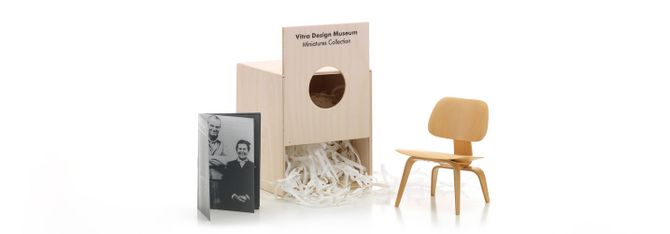
Miniatures Collection - LCW
Charles & Ray Eames, 1945
The plywood chairs DCW (Dining Chair Wood) and LCW (Lounge Chair Wood) are the result of this long-term experimentation. In 1945, Charles and Ray Eames returned to the idea of a seating shell made out of molded plywood; however the results were unsatisfying. They dispensed with the multifunctional shell and divided the seat and back into separate, freely articulated elements connected by a spine (frame). Each element has a clearly defined function, which it fulfills optimally with a minimum amount of material. »Shock mounts« – rubber disks bonded onto the wooden surface – connect the seat and back with the frame, which exists in wood or metal and in two different heights, either as a dining chair or lounge chair.
Informations
| Titre | Langue | File | |
|---|---|---|---|
| Fiche Produit | DE | PDF, 786 kB | Télécharger |
Miniatures Collection
Depuis plus de 20 ans, le Vitra Design Museum reproduit en miniature les jalons de l'histoire du design de mobilier de sa propre collection. La Miniatures Collection englobe toute l'histoire du mobilier industriel – de l'historicisme et de l'Art Nouveau au Bauhaus et à la Nouvelle Objectivité, du Radical Design et du Postmodernisme à nos jours. Les chaises sont reproduites à l'échelle un sixième et reproduisent fidèlement l'original historique jusqu'au moindre détail de conception, de matériau et de nuance de couleur. Cette précision des détails s'applique aussi aux nervures du bois, à la reproduction des vis ou aux méthodes minutieuses de la fabrication artisanale. Ces miniatures sont non seulement de précieux objets de collection, mais également un support pédagogique pour les universités, les écoles de design et les architectes.